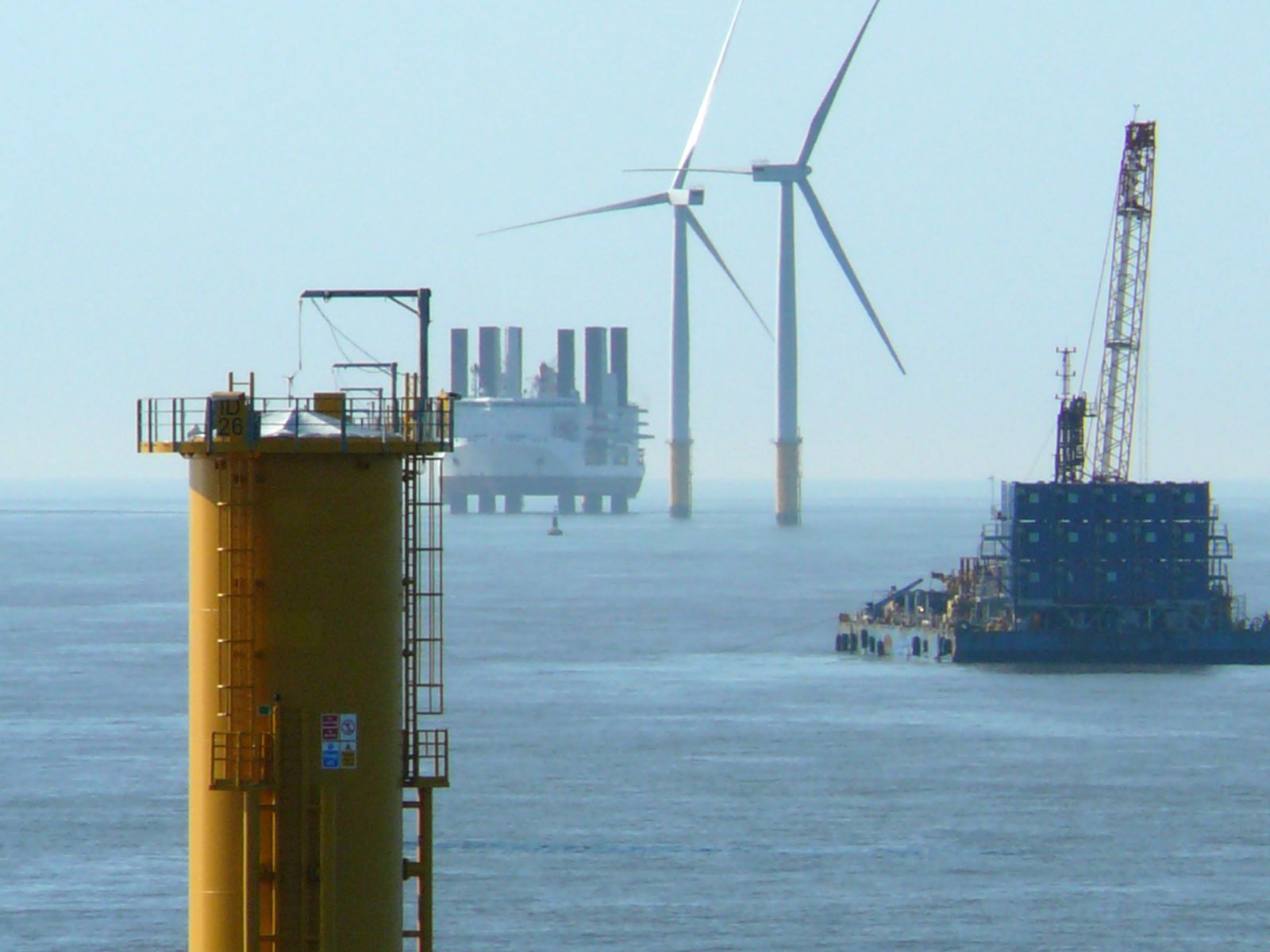Getting US Offshore Wind Farms Built: Integrating knowledge from the European market
 At the end of 2012, the estimated installed capacity of offshore wind exceeded five gigawatt (GW). Of this worldwide capacity, a total of 4,993 megawatts (MW) lie in European waters (according to www.ewea.org), with 400 MW installed in China, and a small demonstrator plant installed in Japan. Although a number of offshore American projects are at advanced stages of development, installation is yet to take place. A look to the European experience of large-scale, offshore wind development through construction and operation can provide the US with an outline of the issues that have arisen and the solutions taken abroad for project success.
At the end of 2012, the estimated installed capacity of offshore wind exceeded five gigawatt (GW). Of this worldwide capacity, a total of 4,993 megawatts (MW) lie in European waters (according to www.ewea.org), with 400 MW installed in China, and a small demonstrator plant installed in Japan. Although a number of offshore American projects are at advanced stages of development, installation is yet to take place. A look to the European experience of large-scale, offshore wind development through construction and operation can provide the US with an outline of the issues that have arisen and the solutions taken abroad for project success.
Common challenges, different results
The development and delivery of multiple, large, offshore wind farms present a number of non-project specific challenges, common to large power projects, which include:
- A lengthy consenting and development process;
- High development and construction costs;
- Design risk and ground risk;
- Accurate predictions of energy production;
- Lack of long-term data on large-scale wind turbine generator (WTG) reliability, and long-term operating costs;
- Constrained supply chains;
- Uncertainty regarding government support and targets;
- Construction delays caused by lack of experience with new WTGs and installation techniques;
- Adverse weather and contract interface issues;
- Risk of contractor insolvencies;
- Grid capacity and interconnection; and
- Lack of long-term operating experience on larger WTG models.
Although these challenges exist on almost every offshore wind development, the chosen approach and level of success across the European spectrum has varied considerably between individual projects and developers. This variety is the result of differing levels of experience and expertise, strategic management, and engineering resources available to developers in the planning, construction, and operation of projects—and, ultimately, a given project’s priorities and budgetary constraints.
Typical development and consenting timescales are five to seven years, with differences between actual construction times versus original schedules varying (from 0 to 12 months). Delays of three to six months have been commonplace on many offshore projects constructed to date.
Experience and expertise on core development-phase tasks are now at levels where projects are going into construction phase in highly advanced states. But experience in managing contracts, contractors, and installation issues during this key phase has been mixed across European projects to date. As a result, actual versus planned costs and completion dates have significantly differed.
Delays & differences
As more offshore wind farms are developed and constructed, industry learning has increased. Despite the growing understanding of offshore wind farm delivery, however, costs on an installed, megawatt-basis have increased steadily over recent years. Even with better development-phase investigations and engineering, for example, a surprisingly high number of foundation and cable installation issues have been encountered on several projects, leading to knock-on delays and costs elsewhere in a construction schedule.
Utilities tend to budget for relatively small levels of contingency, especially considering their preference for using multi-contract approaches to project delivery. This approach often results in supply chain, construction, and interface issues—all of which add to project cost forecasting. When multi-contracting works, it can deliver clear savings compared to industry average costs, however, when it doesn’t work, the resultant delays and costs often end up being higher than for projects with smaller and (at financial close) more expensive “mini-EPC” style contracts.
In spite of the benefit of team resource and sector experience, project management teams formed by utilities can still experience significant time and cost issues. Smaller, independent developer teams, working with a smaller number of mini EPC contracts, often find that contractors aggressively seeking time and cost variations almost immediately after financial close.
Managing risks
Even with the risks, it remains possible to deliver projects with minimum delays and within overall construction budget allowances. Achieving this requires a combination of experience, willingness to seek and act on independent advice regarding the risk profile of the project (versus what the developer thinks is the risk profile), use of proven technology and suppliers, as well as realistic provisions for construction costs and timescales. Interface risk exists on all contracting structures, so early identification, along with an active and ongoing management of these risks makes all the difference for project success.
When backed by realistic construction schedules and budgets that support flexibility, management teams are in a strong position to rapidly identify and reduce (or avoid) problems that could lead to significant time and cost issues. Using supply chain companies who’ve successfully delivered in the past, and have the physical and financial resources to back up their commitments, has also shown to achieve better overall results. This is true even when cheaper, but less experienced alternatives (at least in terms of pre-construction estimates) may exist.
Furthermore, strict contract management, which includes avoiding late changes to design and manufacturing plans, can prevent significant levels of claims for additional costs from contractors, who might be quick to take financial advantage of any project problems.
Future outlook
With construction experience in offshore wind growing, it’s reasonable to expect future costs to improve. This is supported by the UK Government’s Offshore Wind Task Force initiative, for example, which is aimed at facilitating cost reductions through lower construction and operating costs, in parallel with increasing energy production.
Project companies, contractors, and staff knowledge are all increasing, and supply chain capacity is also on the rise. Those project participants who are less capable are quickly being identified, with natural selection often resulting in market consolidation. Even with this growing experience, improvements can always be made. Specifically, supply chain growth with the pace of projects and maintenance of quality standards, while undergoing capacity ramp-up.
Some of the reasons the supply chain has found it difficult to meet project demands could be related to any uncertainty or lack of consistency from the wider industry, including government commitment. Incentives could be needed to support the large European offshore wind targets set for 2020, and beyond.
Despite having to overcome some hurdles, offshore wind is seen to be a growing industry, with many other countries moving forward with offshore wind projects of their own. Although the future of offshore wind energy in North America is in its infancy, some committed companies are pushing to make their projects a reality. These pioneers have made progress by understanding the issues Europe has had with offshore wind, and by taking these as lessons learned.
Simon Luby is the director of Advisory Services for SgurrEnergy.
SgurrEnergy
www.sgurrenergy.com
Author: Simon Luby
Volume: May/June 2013











.jpg?r=6601)